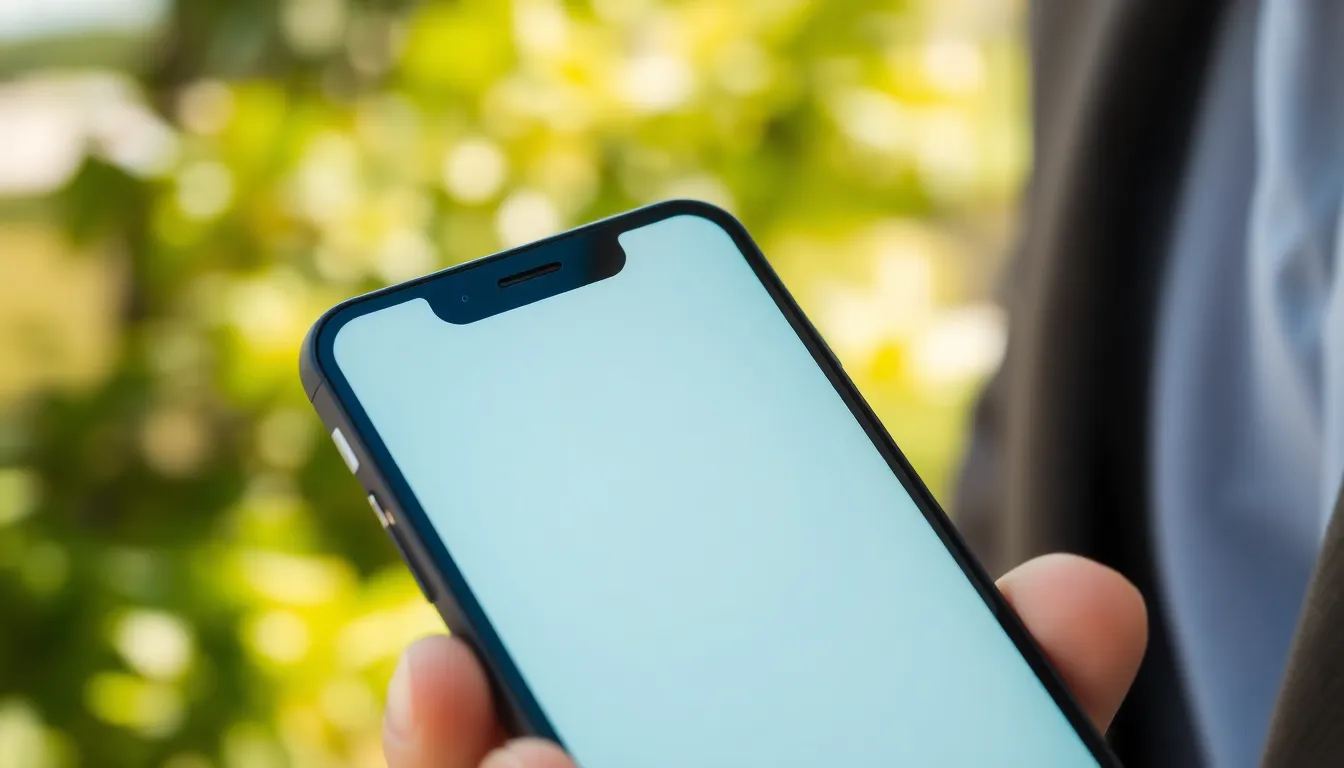Table of Contents
ToggleIn a world where communication happens at lightning speed, sending a text message on an iPhone is as common as breathing. But what happens when you hit “send” and your carefully crafted message appears with the dreaded “sent as text message”? Panic sets in. Did the Wi-Fi gods abandon you? Is your iPhone secretly plotting against you?
Overview of Text Messaging on iPhone
Text messaging on iPhone serves as a primary communication method for many users. Users typically utilize Apple’s iMessage for seamless messaging between Apple devices. iMessage displays features like read receipts and delivery status indicators, enhancing user experience and connectivity.
Sending messages can switch from iMessage to standard SMS when internet connectivity fails. This scenario may arise in low-signal areas or when the recipient does not use an Apple device. Users often experience anxiety when messages show as sent through SMS instead of iMessage, leading to concerns about potential connectivity issues.
Text messages sent in this manner do not display the same advanced features available in iMessage. Standard SMS messages lack encryption and may take longer to deliver, depending on carrier services. Users sometimes feel frustrated when expecting an iMessage experience, only to be met with the simplicity of SMS.
Adjusting settings can improve the messaging experience. Apple allows users to toggle the “Send as SMS” option in settings, providing control over how messages are sent. Activating this setting enables automatic switching between iMessage and SMS based on connectivity factors.
Being aware of these differences helps users manage expectations. The ability to message across diverse platforms adds another layer of convenience to texting. Overall, understanding text messaging on iPhone fosters better communication and mitigates anxiety when issues arise.
Understanding “Sent as Text Message”

“Sent as Text Message” indicates that a message did not go through iMessage but was sent as a standard SMS. This can happen for various reasons, primarily due to connectivity issues, such as losing a Wi-Fi signal or poor cellular reception. Users often notice the change by the green message bubble instead of the blue one, signifying an SMS instead of iMessage.
What Does It Mean?
When messages switch to SMS, they lack the features users expect from iMessage. Advanced features like read receipts and end-to-end encryption are not available with standard text messaging. An SMS might also experience delays or fail to deliver altogether in certain conditions. Knowing this difference clarifies what users can expect from their messaging service and enables them to communicate more effectively across varying platforms.
Signal vs. Wi-Fi
Signal strength plays a significant role in message delivery. A strong cellular signal allows for SMS to function effectively, whereas Wi-Fi enables iMessage to send and receive messages. Disconnecting from Wi-Fi may cause a seamless switch to SMS if cellular data is enabled. In areas with weak cellular reception or no Wi-Fi, messages may default to SMS, surprising users expecting iMessage’s enhanced capabilities. Users can benefit from understanding these dynamics to manage their expectations and enhance communication.
Common Issues with Sending Messages
Common issues can arise when sending messages on an iPhone, particularly when messages switch from iMessage to standard SMS. Connectivity problems often lead to these frustrations.
Ensuring Network Connection
Strong network connection plays a crucial role in reliable message delivery. Users should check cellular signal bars before sending texts. Wi-Fi also affects iMessage functionality, so a stable internet connection is essential. Verifying that the device connects to a working Wi-Fi network ensures iMessage operates smoothly. Users can confirm network settings through the device’s Settings app. Dropping signal strength may prompt switches to SMS, causing missed features like read receipts and encryption. Therefore, maintaining strong connectivity directly impacts successful messaging.
Troubleshooting Tips
Several troubleshooting steps can help resolve common messaging issues. First, restarting the iPhone often fixes temporary glitches. Next, updating iOS software ensures compatibility with messaging services. Users should also toggle the “Send as SMS” option to manage preferences effectively. Checking the recipient’s settings is beneficial, as non-Apple devices may only support SMS. Resetting network settings can clear any erroneous configurations, improving connectivity. Lastly, users can contact their carrier for assistance if the problem persists, confirming that no service outages affect message delivery.
Features and Benefits of Texting on iPhone
Texting on an iPhone offers various features and benefits that enhance communication. Users appreciate the seamless integration with other apps.
Integration with Other Apps
Text messaging on iPhone integrates smoothly with apps like FaceTime, Photos, and Calendar. Users can easily share photos or schedule events directly within conversations. These functionalities enable quick access to media and information, enriching the messaging experience. Users can respond to messages from third-party apps, allowing for a more personalized communication style. Notifications from integrated apps ensure users stay updated without leaving the messaging platform.
User Experience
User experience remains a top priority for iPhone messaging. Intuitive interfaces make navigation simple and engaging. The combination of features like read receipts and typing indicators fosters connection and interaction among users. Customization options, such as enabling or disabling notifications, enhance individual preferences. Users find the green and blue bubble distinction helps identify message types quickly, providing clear communication context. Overall, these elements create a smooth and enjoyable texting experience for iPhone users.
Understanding the nuances of text messaging on an iPhone can significantly enhance the user experience. Recognizing when a message is sent as SMS rather than iMessage helps alleviate confusion and anxiety. Users can take proactive measures to ensure reliable communication by monitoring connectivity and utilizing troubleshooting tips.
The integration of messaging features with other apps allows for a richer communication experience. By appreciating the distinctions between message types and the underlying technology, iPhone users can navigate their messaging needs more effectively. Ultimately, staying informed about these aspects leads to a smoother and more enjoyable texting experience.







